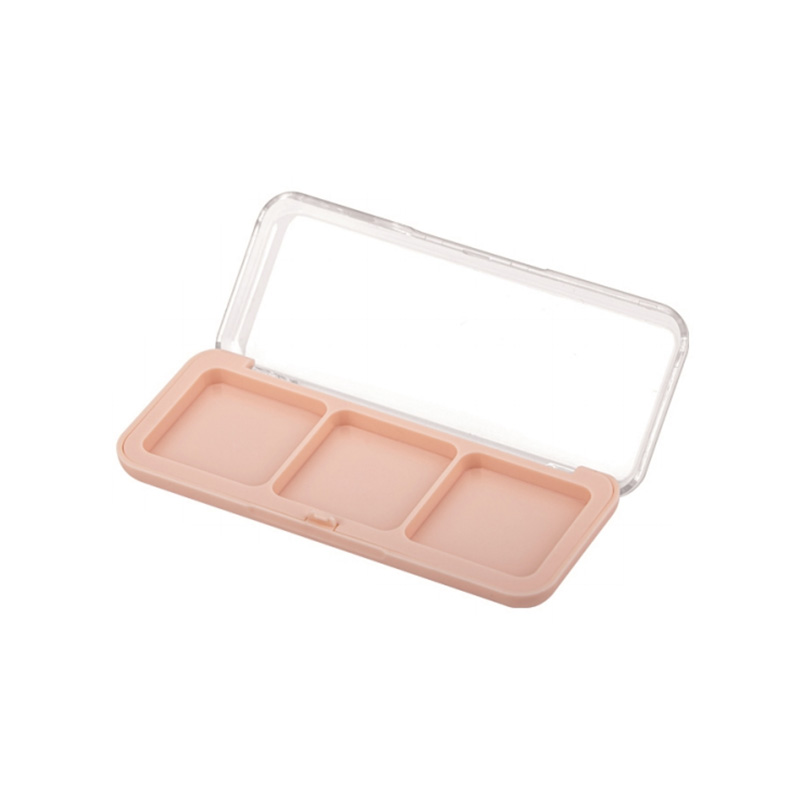
As environmental awareness grows, many cosmetic brands are seeking sustainable options in empty eyeshadow containers to align with eco-friendly values. Consumers increasingly prefer products that minimize environmental impact, and packaging plays a critical role in this effort. Choosing sustainable eyeshadow containers not only reduces waste but also enhances brand reputation by demonstrating commitment to responsible practices.
One popular sustainable option for empty eyeshadow containers is the use of recycled materials. Containers made from recycled plastics or metals reduce reliance on virgin resources and lower carbon footprints. For instance, recycled aluminum containers offer durability while being fully recyclable at the end of their lifecycle. Similarly, recycled PET plastic containers can be designed to be lightweight yet sturdy, cutting down on material use and transportation emissions. Using recycled materials helps close the loop in material usage and supports circular economy initiatives.
Biodegradable and compostable materials are another sustainable choice for empty eyeshadow containers. Some brands opt for containers made from bioplastics derived from renewable sources like cornstarch or sugarcane. These materials break down naturally under appropriate conditions, reducing long-term pollution associated with conventional plastics. While compostable eyeshadow containers may require industrial composting facilities for proper disposal, they represent a step toward reducing persistent waste in landfills and oceans. Choosing biodegradable containers reflects an effort to minimize environmental harm throughout the product lifecycle.
Refillable and reusable empty eyeshadow containers also appeal to eco-conscious brands. By designing containers that customers can refill with new product, brands encourage reducing single-use packaging waste. Refillable options often feature durable materials and user-friendly mechanisms for easy product replacement. This approach not only lowers the demand for continuous production of new containers but also fosters a stronger connection between brands and consumers focused on sustainability. Offering refillable containers can differentiate brands in competitive markets while promoting responsible consumption habits.
Minimalist packaging design is another important factor in sustainable empty eyeshadow containers. Reducing excess materials, avoiding unnecessary coatings or decorations, and simplifying shapes can lower environmental impacts. Lightweight containers require fewer resources and reduce transportation emissions. Additionally, using mono-material packaging enhances recyclability by preventing contamination from mixed materials. Brands that prioritize minimalist design demonstrate an understanding of sustainability beyond just materials, addressing the entire lifecycle of their packaging.
Certifications and standards also play a role in identifying sustainable empty eyeshadow containers. Look for packaging that meets recognized environmental standards or certifications such as FSC for paper-based components or certifications for compostability and recyclability. These indicators provide assurance to brands and consumers that the containers meet certain environmental criteria, adding credibility to sustainability claims.
While sustainable options in empty eyeshadow containers offer many benefits, it is important to consider the balance between functionality and environmental impact. Containers must still protect the product, maintain aesthetics, and provide ease of use. Collaborating with experienced packaging suppliers can help eco-friendly brands find solutions that meet both sustainability goals and consumer expectations.
Sustainable options in empty eyeshadow containers include recycled materials, biodegradable bioplastics, refillable designs, and minimalist packaging approaches. These choices help eco-friendly brands reduce environmental footprints, support circular economy practices, and appeal to conscious consumers. By carefully selecting and designing their packaging, brands can contribute to a more sustainable beauty industry while maintaining product quality and customer satisfaction.



 English
English  中文简体
中文简体  عربى
عربى  Español
Español 


